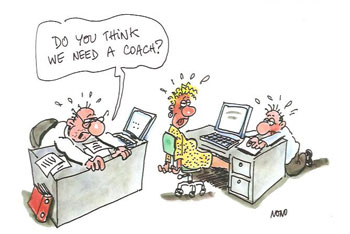Workplace stress is the harmful physical and emotional response that occurs when there is a poor match between job demands and the capabilities, resources, or needs of the worker.
 Because stress results from interaction between an individual and his or her surroundings, we know today that stress is unique to each of us. Factors such as, heredity, education, socio-cultural surroundings, life experiences and, above all, personality, all play a role. The people most at risk are those who are hyperactive, impulsive, always hurried, impatient, ambitious, aggressive and people who are always trying to get ahead, to gain something. As a result, these people often suffer from heart-related illnesses, stomach ulcers, arterial hypertension and strokes.
Because stress results from interaction between an individual and his or her surroundings, we know today that stress is unique to each of us. Factors such as, heredity, education, socio-cultural surroundings, life experiences and, above all, personality, all play a role. The people most at risk are those who are hyperactive, impulsive, always hurried, impatient, ambitious, aggressive and people who are always trying to get ahead, to gain something. As a result, these people often suffer from heart-related illnesses, stomach ulcers, arterial hypertension and strokes.
In order to be able to control stress, one has to confront it, by identifying both the stress factors themselves and our own reactions to these stresses. Controlling stress means limiting it to good stress, i.e. keeping it at a level that optimizes performance and creativity, not the contrary.
MY PRACTICAL APPROACH
A combination of organizational change and stress management is often the most useful approach for preventing stress at work.
How to Change Organization to Prevent Job Stress
- Ensure that the workload is in line with workers' capabilities and resources.
- Design jobs to provide meaning, stimulation, and opportunities for workers to use their skills.
- Clearly define workers' roles and responsibilities.
- Give workers opportunities to participate in decisions and actions affecting their jobs.
- Improve communications-reduce uncertainty about career development and future employment prospects.
- Provide opportunities for social interaction among workers.
- Establish work schedules that are compatible with demands and responsibilities outside the job.
- Combat workplace discrimination (based on race, gender, national origin, religion or language).
- Bring in an objective outsider such as a consultant to suggest a fresh approach to persistent problems.
- Introduce a participative leadership style to involve as many subordinates as possible to resolve stress-producing problems.
I work with the human resources team in order to heighten the awareness of all key personnel throughout the company, and ensure those key people are present at the seminars, symposiums or workshops.
What are your goals ?
- You wish to set up the best organization possible for your employees.
- You think that the feel-good factor is important for the employees in your company.
- You wish to integrate this feel-good factor into your company strategy and policy.
- You wish to set up a transparent and clear-sighted leadership.
